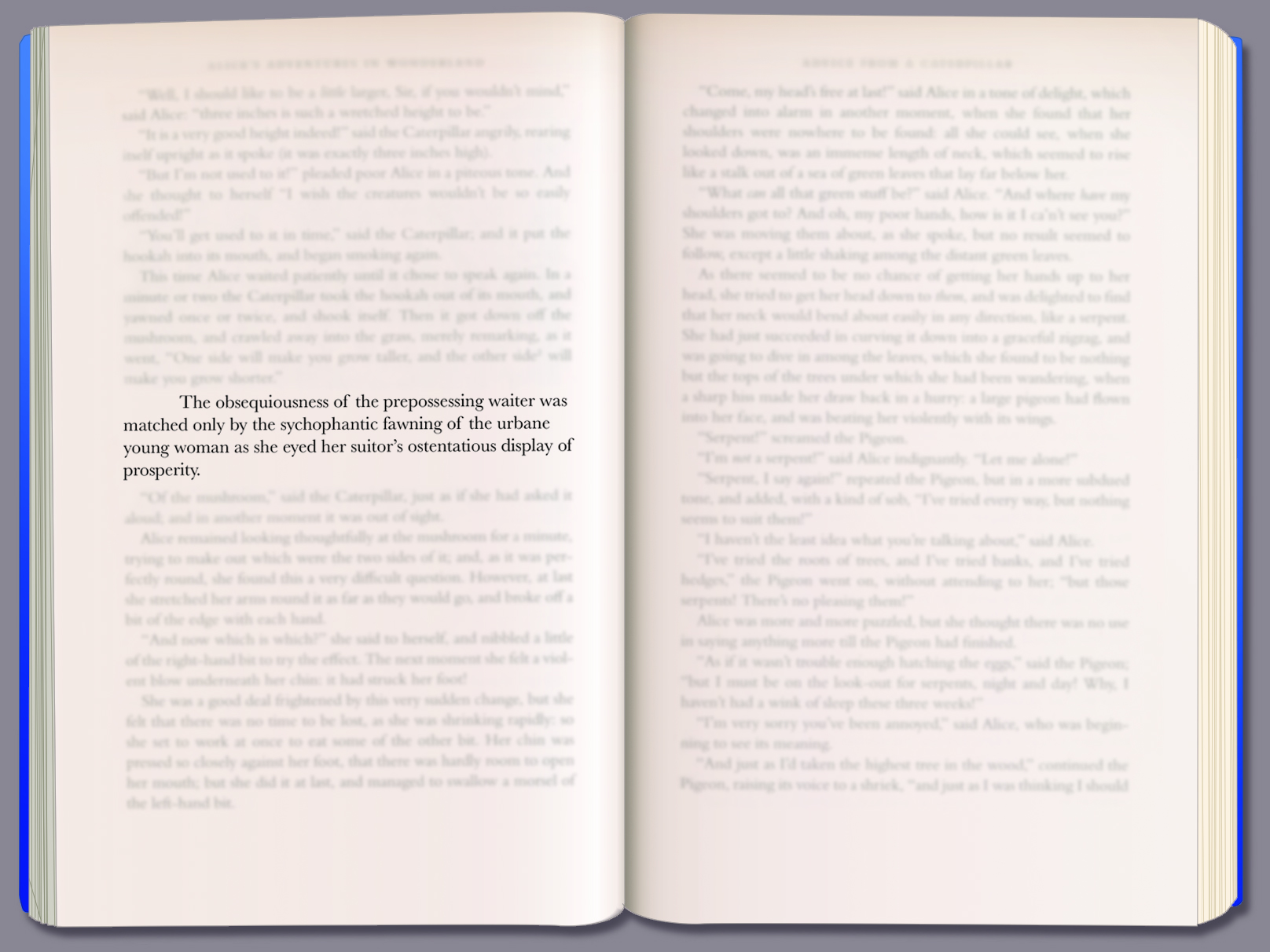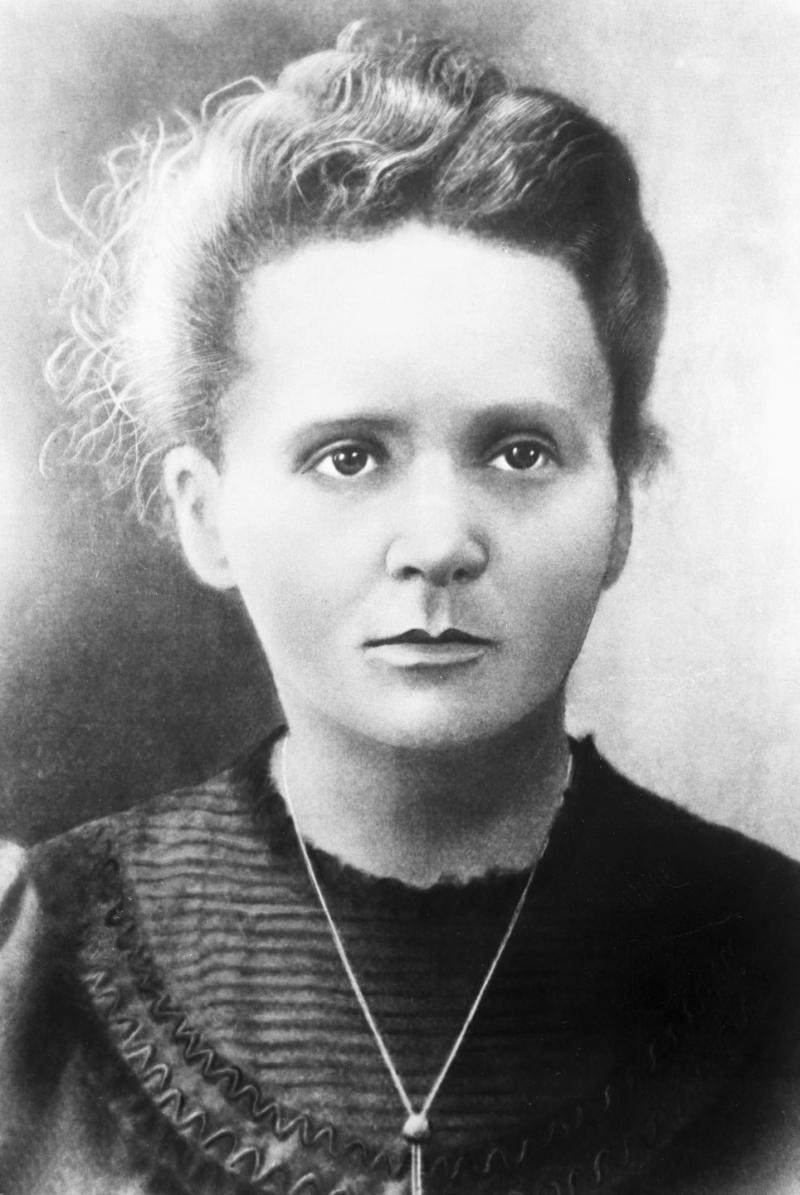Chapter 10. How Would You Know If Intelligence Changes With Age?
By:
C. Nathan DeWall, University of Kentucky
David G. Myers, Hope College

World-renowned American artist Georgia O’Keefe remained active and productive well into her eighties.
10.1
Note: You will be guided through the Intro, Design, Measure, Interpret, Conclusion, and Quiz sections of this activity. You can see your progress highlighted in the non-clickable, navigational list at the right.
Watch this video from your author, Nathan DeWall, for a helpful, very brief overview of the activity.
10.2

So, how would you know if intelligence changes with age? To study this question in your role as researcher, you need to DESIGN an appropriate study that will lead to meaningful results, MEASURE a specific type of intelligence, and INTERPRET the larger meaning of your results, considering how your findings would apply to the population as a whole.
Question
Click on "Video Hint" below to see brief animations describing Cross-Sectional and Longitudinal Studies and Experiments.
Video Hint
10.3
Longitudinal and Cross-Sectional Studies:
Experiments:
10.4

You have chosen Cross-Sectional Correlational as your design. Usually, researchers use this design when they want to compare a behavior or psychological process in people of different ages. For example, researchers might examine the relationship between memory speed and age. To conduct their study, researchers would recruit people of different ages and compare their memory speed. Cross-sectional research captures a moment in time and does not follow people over time.
Question
10.5

What could we learn from these participant choices?
a. A group of people with high intelligence levels and a group of people with low intelligence levels This option does not tell you whether people in the two groups are the same age or different ages. To know whether intelligence changes with age, you would need to study individuals of different ages.
b. A group of people aged 18-25 years and a group of people aged 75-82 years You made a wise choice by selecting groups of people who differ dramatically in age. HOWEVER, this option does not take into account differences between people based on what point in history they were born. The world has changed considerably over the past 50 years, which can influence intelligence levels.
c. A group of people aged 18-20 years and a group of people aged 21-23 years You are on the right track by comparing groups of people who differ in age. But the amount of age difference is likely too small to matter in terms of their intelligence levels.
d. A group of people aged 75-77 years and a group of people aged 78-80 years You are on the right track by comparing groups of people who differ in age. But the amount of age difference is likely too small to matter in terms of their intelligence levels.
Trying to choose a sample of participants helps us realize that the CROSS-SECTIONAL CORRELATIONAL STUDY IS NOT THE BEST RESEARCH DESIGN to test this question. We’d get more helpful results by retesting the same people’s intelligence levels over a period of many years. This would help us determine whether intelligence changes with age.
Click “Next” to go back and try again to select the most effective research design.
10.6

You have chosen Experimental design, which means you want to systematically change one variable to determine whether it causes a change in another variable. For example, suppose a researcher wants to know whether authors who use overly complex words are perceived as intelligent. The researcher would set up two groups. In the experimental group, people would read sentences with overly complex words. In the control group, people would read sentences with simple words. Then the researcher would ask all participants to rate the author’s intelligence (Oppenheimer, 2006). The experimental design allows researchers to determine causality—whether writing with overly complex words causes people to perceive an author as more intelligent. (It doesn’t. Using overly complex words causes people to perceive authors as less intelligent. So keep it simple!)
Question
Qrg5Uu+9RxK//f6VfGeZf9g4tHnsW3nwkIcD9/NTXsaZBmOsyGOAe3vE9mpoL9OSaGMu3mGt14bsZslyiBZNWjvlgAHhAZdWbBwl3sDAfSohJnGalNq5L7r9gdhuqsngrnhPJEPyhBpb0NEOLeXF/LXYeHY79MCfvgEEZ4J7/OymDxxsxeCTHXZkrnsWladWIoXmtJmFcadxazoZqLb4sj8oT3KASLWkEFkZ/A==10.7


It would be difficult to use an experimental design to study this question, because you cannot systematically change age. Some people are young and some people are old, but you can’t make young people old and old people young—we can’t randomly assign participants to an age group. We need to determine whether intelligence levels measured repeatedly in the same individuals change as they grow older.
So, EXPERIMENTAL IS NOT THE BEST RESEARCH DESIGN for this study. For more on Research Ethics and why an Experimental design can’t always be used, click on “Video Hint” below.
Video Hint
Click “Next” to go back and try again to select the most effective research design.
10.9

Nice work! You have correctly chosen to use a Longitudinal Correlational Design for your study.
Next, you need to choose the most appropriate study participants.
Question
B/kWqrBW6fs6cx6bBiz90/1dm06BmS4Ddzdxk9WhNo7QZBzbx2CN4+WSMQNVQVsjREf34ZUDf83DcyQ/LoIe7b1PPjULUf1MTWb/zX/HXI5MM89Cx+1JaFsRf7cqhWEsfDVlv2hgJToaTsClOMgvv+Twnq75FRsaSUMt3BzjjOEnFNFNSEqPMMr0xRvBKO6avH5Me9BzUssXU5aTQYW/m/Fl5ARafgiqNXKobZUHNDPNPd0VyabvckZUNKahMmP17VxPs+LEJ0XRzHM45DgRUnHJAglsBcJ64cGNuyW9qP6OGZLnQ/zJ4wGrt27u6TX+YMwvJWW5u2IBY3+eVameUIE2kAZm0qhXWpMNjOP1YnLIVYpTdJxsKt6g3fMIuWuMNMPMPiHcdHZlpSWkfgdXa6y7oi3DNFD+oweLaWjZ0KV7vByCYF+2JHqC98gK0dNM12Fsw5WEBvt0ZpgtEHdY+eEC8PTQbdCh68qPJLYPdEeqWGyqa55SBvRlNfvng6wxX17IsXTvFYlVp3seSbuD9dru3Hu9pfBARyc87IBRTbZYciNMkPgDcayXMDh6yzcZrYecdAE3wnBMpPrt+w3+/iWz5X0fffml4s774olHGMUWObgMN4DqspfbVhoinmFbQm8OVEHRoq5mvjqqVftvOn92HIBwL7bZaDk49Oicq7Ubj580pmaQKeLw6Em45A/aBpVj8GUjkTtvL6ZYOVSMwez4UcmIXbmm10.10

You chose A group of people with high intelligence levels and a group of people with low intelligence levels, but this is NOT CORRECT. Using the longitudinal correlational design, you would need to know the ages of your participants, and test their intelligence over many years, in order to determine whether intelligence changes with age.
Click “Next” to try again to choose the most appropriate study participants.
10.11

You chose A group of people aged 18-20 years and a group of people aged 21-23 years, but this is NOT CORRECT. Researchers would only study varying-aged groups in this way when using a cross-sectional correlational design, but not with the longitudinal correlational design you are using to test your research question. In your longitudinal correlational study, you need to retest the same people over a period of many years in order to determine whether intelligence changes with age.
Click “Next” to try again to choose the most appropriate study participants.
10.12


You chose A group of people aged 18-25 years and a group of people aged 75-82 years, but this is NOT CORRECT. Researchers would only study varying-aged groups in this way when using a cross-sectional correlational design, but not with the longitudinal correlational design you are using to test your research question. In a longitudinal correlational study, you retest the same people over a period of many years. The main downside in a cross-sectional correlational study is that you cannot take into account differences between people based on what point in history they were born. The world has changed considerably over the past 50 years, which may influence intelligence levels.
Click “Next” to try again to choose the most appropriate study participants.
10.13

Good job! You have correctly chosen to use a Longitudinal Correlational design, in which you will retest intelligence levels in the same individuals over many years. You also chose an appropriate sample of participants—A group of people whose intelligence you measure every two years beginning at age 18 and ending at the end of their lives. Now you need to determine how best to MEASURE the relevant behavior or mental process, which in this case is intelligence. Intelligence tests measure different abilities. In this study, we will focus on fluid intelligence, or our ability to reason speedily and abstractly, as when solving novel logic problems.
10.14

Question
/9LcQUhtSutRodMq2/sUK/JuTqyjCgFYJaTUnkevwdmjLCUyxn4MWFWVJ+/k7KkQWbkiCCp3iW4W9GDcSiH7bF9ZvGmAQ9e2elUWccQGEcJOWqgL8ZwbJY4nzKhXabEJdMnRdIDns+Y/m6/kou96/GPsTZwsVxehLvNCOOPTlRkbNqYxGBvCEZbbsSvefaVWeWtGlZ9aAmjsG9YJvqIea/dJ8w6ffZ7QQ8KbvNf1CS5MJsRZOtp2f51H9wBjgaEuhk0DDRimFXGvxE0SBC6pBaPjo93mYu6kaMZrc8T670N9Sadz4rHlR89NCLGnUNc3Hztp5emmRYF/KKnbvHEsAS+ML/NaveZqjPebMzxSQJYg+n65gGhYvDrCWbzxIQvCbQTaB4Amvp/UWCJ1fksaxgP2YfBsF1j2yjqtZRljEXCh9KccjcpQ/L1Pwc7tCmTCoELL8PtPS4THUSzg0j8K8SwQaGFD+C0pXFqzGqGiMpYtRibA1zyy/PRmSd928rlE+YOtnPgn0Qar8Rg4Xqz0Xaz+u2WV5B1ApnIwlaev7RBBbSm6HYXGIABBqcryNS2bvqt76I7qf+zHr/xgxaVO6JDK4YrknlA3teAsnQi2IbpXV1YddFliXUj5r8hpKDOmTYPHpRm0aE7Ilb4pD5oLGj3yAJvR6dhDRTSzrrOATG5nshz/DMJx8YB9Y9V6c0SJgLLHSspX/wUbvUI7Fvhk+z8PC4s91TlD+uOnH6DKPGz9yRstMKLVGpe9cruxkI7Pg66O2Lrm/tyWqgOrsH9XM/G7XsHVBxY4Sm/O46Y1QrhIbU6CzEZP25/76Nacn1s2arwyg+4J+1X2YAhxYnB3B+xiZPIMjaEL1wKzAfw/ImPue1QvW4oiU4l5iCM0smYJWg1lwu2UeBTfGVsT2lDpqPjVb1VzApxJer86gLU7P+Dz0yPA54ETZsTXdRdh0UMFf+XRaJS5TPcTQHEcMvF7WwmatfHxnFWn1E/1cVu3GI+L0TbjCobJRNP7SY4mS/VLssCvqJvSZ+bwypsnstmwE94x5CpovXMiYXfw2Z8FHpwHyHZt3AyWu/l+7loU+nXz16IF0kfhOVvw7RhSS/13tcoGXIpjkLYbLvpY1g==10.15

You chose Have participants report how smart they think they are compared with the average person who is their age, but that is NOT CORRECT.
This option would not give you information about participants’ intelligence levels. It would only tell you how much they think they are intelligent. Thinking you are intelligent and actually being intelligent are not the same thing. To know whether intelligence changes with age, we have to measure actual intelligence.
Click “Next” to try again to select the best way to measure whether intelligence changes with age.
10.16

You chose Have participants complete tests of their vocabulary knowledge. You will measure your participants’ accuracy, but that is NOT CORRECT.
This option would not give you information about participants’ fluid intelligence. Recall that fluid intelligence refers to how speedily and abstractly we think. You can learn many new vocabulary words, but that does not mean that you can use them quickly or apply them to solve novel logic problems. We need to measure our participants’ fluid intelligence levels.
Click “Next” to try again to select the best way to measure whether intelligence changes with age.
10.17

You chose Have participants report how much they believe that intelligence is a fixed quantity or that intelligence is changeable, but that is NOT CORRECT.
This option would measure participants’ beliefs about intelligence, but it would not measure their actual intelligence. Our beliefs about intelligence are important, but they are not the same thing as our actual intelligence. To know whether intelligence changes with age, we have to measure participants’ actual intelligence levels.
Click “Next” to try again to select the best way to measure whether intelligence changes with age.
10.18

Nice job! You correctly chose to use a Longitudinal Correlational design, in which you will retest intelligence levels in the same individuals over many years. You chose an appropriate sample of participants—a group of people whose intelligence levels you will measure every two years from age 18 until the end of their lives. You also chose how best to MEASURE the relevant behavior or mental process, which in this case is fluid intelligence. You correctly selected the option, Have participants complete several logical reasoning questions. You will keep track of how long it takes them to complete the questions and their accuracy.
In several studies, researchers have shown that fluid intelligence in fact tends to decrease as people age (Salthouse, 2010). Beginning in our twenties and thirties, we steadily lose our ability to reason speedily and abstractly. This decline in fluid intelligence is gradual until about age 75 and then occurs rapidly, especially after age 85 (Schaie, 1994). The good news is that we do gain vocabulary and knowledge with age. This might help explain why grandparents enjoy crossword puzzles. They have word power!
Knowing this, you need to consider how you can apply what you’ve learned to the larger population—beyond the people you’ve studied. Consider where you might encounter roadblocks to confidence in your results. What factors might keep you from being able to apply what you’ve learned in a broader context?
10.19

Credit: Science Source/Getty Images

Credit: RIA Novosti/Alamy
You tested whether intelligence changes with age. You measured fluid intelligence levels in a group of people beginning at age 18 and then again every two years until the end of their lives. (In reality, you would need researchers to continue conducting your studies after you were gone, given how many years your study would span! There is a reason so few longitudinal correlational studies are done.) Several factors could influence fluid intelligence, and they might not have any relation to whether people are young or old! Factors that could interfere with your INTERPRETATION of results are called confounding variables.
Question
From the list below, select all of the factors that could affect your confidence about whether intelligence changes with age (based on measures of fluid intelligence):
ZycNTMvpRoSnXPUZl8FiVl5s+iDEL2Bo Whether participants experience a brain injury to the frontal lobe after they begin participating in the study
3jskoxIwaHnoYr4Fsi2l/v3etGMIufia Number of intelligence tests that participants take in their spare time
3jskoxIwaHnoYr4Fsi2l/v3etGMIufia How much participants desire a romantic partner with high intelligence levels
ZycNTMvpRoSnXPUZl8FiVl5s+iDEL2Bo The year in which participants were born
3jskoxIwaHnoYr4Fsi2l/v3etGMIufia How much participants identify with the lives of extremely intelligent people, such as Albert Einstein and Marie Curie
Click on "Video Hint" below to see a brief animation describing Confounding Variables.
Video Hint
10.21

Credit: Science Source/Getty Images

Credit: RIA Novosti/Alamy
The confounding variables for your study would include those highlighted below:
You are comparing intelligence scores in participants who are tested repeatedly over many years. But you need to make sure that you keep track of events that might lower their intelligence, especially those that have nothing to do with the aging process. Fluid intelligence relies largely on the frontal lobe of the brain. If participants have an injury to the frontal lobe, their fluid intelligence may drop.
Knowing when participants are born tells you more than just their age. One of the most reliable and puzzling effects in psychology is called the Flynn Effect (Flynn, 2010). It refers to the fact that intelligence levels have increased over time. Since 1951, the average IQ has gone up 2.31 points per decade (Trahan et al., 2014). That’s quite a bit. To determine whether intelligence changes with age, we need to take into account when people were born. Those born later in history are in general going to show higher intelligence levels at all ages than will those born earlier.
Unless you keep track of the highlighted confounding variables, you might draw incorrect conclusions about your study results.
10.22
You may do better on the Quiz if you take notes while watching this video. Feel free to pause the video or re-watch it as often as you like.
REFERENCES
Flynn, J. R. (2010). Problems with IQ gains: The huge vocabulary gap. Journal of Psychoeducational Assessment, 28, 412–433.
Oppenheimer, D. M. (2006). Consequences of erudite vernacular utilized irrespective of necessity: Problems with using long words needlessly. Applied Cognitive Psychology, 20, 139-156.
Salthouse, T. A. (2010b). Selective review of cognitive aging. Journal of the International Neuropsychological Society, 16, 754–760.
Schaie, K. W. (1994). The life course of adult intellectual abilities. American Psychologist, 49, 304–313.
Trahan, L. H., Stuebing, K. K., Fletcher, J. M., & Hiscock, M. (2014). The Flynn effect: A meta-analysis. Psychological Bulletin, 140, 1332-1360.
10.23
QUIZ: NOW WHAT DO YOU KNOW?